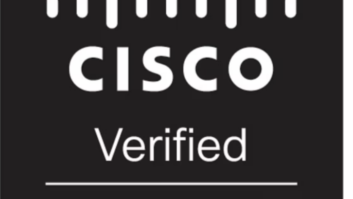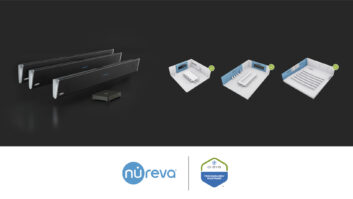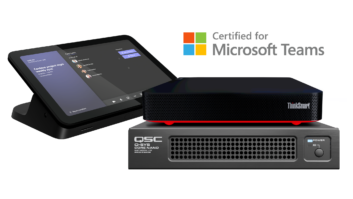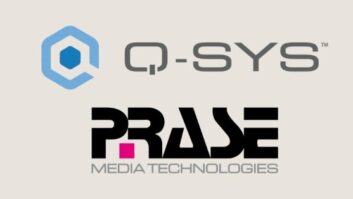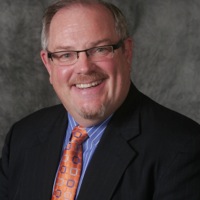
The executive director of the Professional Audio Manufacturers Alliance discusses the group’s evolving role and its involvement in the Future Trends Summit at this month’s ISE. How did you come to be involved with PAMA as its executive director? I am senior vice-president of member services for InfoComm, and about two years ago PAMA approached us and explained their desire to expand and move forward. They asked InfoComm to provide some management services and we agreed, although PAMA is still a completely separate organisation with a separate board and a separate budget. My own background prior to InfoComm includes 14 years at Sony Corporation, latterly as head of business operations for the pro group. This experience means that I have a pretty good understanding of how manufacturers work! What can we expect from PAMA’s Future Trends Summit panel session, ‘The Future of Audio Networking: Reality & Potential’, on 30 January? The focus will be on the future and expansion of networking beyond just audio networking. While PAMA is an audio manufacturer’s alliance, [issues surrounding] interoperability and networking go into numerous other areas. So I think you will hear plenty of discussion about likely developments over the next few years and how, for example, audio and video are going to be brought together. We have a great line-up of panellists, namely: Matt Czyzewski, vice-president business development, Biamp Systems; Richard Zwiebel, vice-president systems strategy, QSC; Graham Hammel, director system development and integration group, Harman Pro; Klas Dalbjorn, product research manager, Lab.gruppen; and John McMahon, executive director digital products, Meyer Sound. How do you perceive the emergence of AVB (Audio/Video Bridging)? Do you sense an emerging consensus about its role in the future of networking? Many of our members are proponents of AVB and have signed on to that, but there is still some debate both within PAMA and elsewhere about [what form] the platform should take. Don’t forget that PAMA represents 15 audio companies – very large ones, for sure, but there are probably at least 500-600 audio companies worldwide. Dealing with interoperability extends far beyond a small group, and that’s where the challenge lies. Aside from networking and interoperability, what are the main issues currently preoccuping PAMA members? There is certainly a lot of discussion about new standards, like EN54 in Europe and NFPA 72 in the US. People want to find out how they are proceeding and what impact they are likely to have. Sustainability is another major focus with issues such as standby power consumption on audio amplifiers. There’s also been a great deal of debate around audio quality and perceptions of quality, as well as intellectual property and counterfeiting. We recently had our annual summit event, and there were a lot of contributions about IP issues in Asia. It’s a real conundrum for pro-audio companies that while they have to confront the IP problem, Asia is, for many members, the place they need to be to manufacture. It’s a constant conversation about how to balance one against the other. The shortage of neodymium and the impact on manufacturing processes and the cost of speakers is another current concern. PAMA provides a very useful forum for manufacturers to come together and talk through all of these issues, many of which have a clear impact on integrators, too. As you imply, intellectual property infringement is preoccupying a lot of manufacturers at the moment. What is PAMA doing in this area? Without sharing too many specifics, many PAMA members have come together to look jointly at some of the issues occurring for them in Asia and how they can put a stop to them. There have also been common discussions with other associations like NAMM as well as customs and border patrol organisations. Plus, of course, each company has its own individual mission. Does PAMA elicit the input of integrators during its research projects?We recently undertook a survey on interoperability that went out to over 36,000 people, and I would estimate that about 50% of those were integrators. Moreover, integrators constituted about 90% of the respondents. The project provided an opportunity for their opinions to come through, and it’s clear that there is a desire to know what the common language is going to be that will get the audio amplifier to talk to the video system, and how we will control that. Questions from the survey have fed into the panel session taking place at the Future Trends Summit. Uncertainty about networking can’t be good for business. What steps are PAMA members taking to help offer reassurance? As signalled by the panel session at the Future Trends Summit, I think we are beginning to see a lot of outreach and educational initiatives designed to explain the various aspects of the subject, and look at the way forward. Each PAMA member company will obviously need to make its own decisions about what it needs to do, but as a group we are committed to going out and talking about networking/interoperability and informing people about the common issues. Do you expect PAMA to expand further in the future? I think the group will continue to grow as time goes by. IP issues aren’t likely to go away, while the continuing proliferation of standards will have an impact on how products are made and how they perform – so there will remain a need for this kind of unified front. We also have a very proactive approach towards recruiting new members. While it’s great as executive director to go out and talk to companies, the value proposition for PAMA is when someone from company A goes and talks to company B and explains the value that they are getting from their involvement. Ultimately, more companies equals more strength in numbers, as well as helping to improve the value of the conversation. I’ve been very impressed by the level of cooperation I’ve witnessed in PAMA. While each company is very protective of its own business, its own IP and how it works, there is undoubtedly a very great realisation of the need to work together to continue to promote pro-audio. That has to be good news for the industry as a whole. Duffy Wilbert was speaking to David Davies.www.pamalliance.orgwww.iseurope.org
